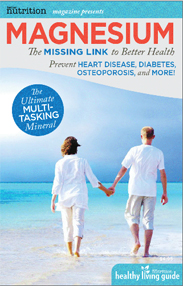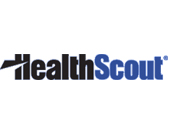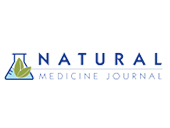Bone Health, Osteoporosis and Bone Density Myths
 Bone health and bone density is a universal concern which starts from a very early age. Studies show relying on Calcium alone is not enough.
Bone health and bone density is a universal concern which starts from a very early age. Studies show relying on Calcium alone is not enough.
Myth #1: Bone Health is an Old Age Concern
Magnesium supplements play a vital role. The period between adolescence and the early 30s is crucial for establishing bone mass. Studies show we naturally lose bone mass after this period which affects both men and women. Girls who markedly reduce their activity levels after puberty lose bone in their femoral neck before their 25th birthday.
Our skeletal system is alive and vibrant and structural growth occurs as follows:
40% during the ages 1 to 10
40% during the ages of 10 to 20
20% during the ages of 20 to 24
Osteoporosis could be called a pediatric disease with a geriatric consequence.
More than 10 million North Americans have osteoporosis and more than 35 million have low bone mass (one risk factor of future osteoporosis).
There are more than 1.5 million osteoporosis-related fractures in North America each year
As life expectancy increases, these numbers will only increase.
Diet as an Issue in Osteoporosis
1 in 4 veggies consumed by children is French fries
I in 14 eat 4 or more fruits and veggies daily
1 in 4 eat candy or chocolate bars daily
1 in 3 drink pop daily
1 in 4 schools provide phys-ed programs
50% of schools have contracts with soda pop companies
Birth control pills deplete important nutrients including B6, B12, folic acid and magnesium.
Canadian Medical Association Journal (Oct 16, 2001) showed oral contraceptive users 2.3% to 3.7% lower BMD (Bone Mineral Density) than non-users
Depo-Provera hormone shots also come with risk: Study showed loss in bone mineral density by 6% over 2 years, while non-uses had a gain of 2% during the same period.
Myth #2: Bone Health is Separate From Other Diseases
Heart disease and Alzheimer’s are just 2 examples linked to low bone density. In almost everyone, in varying degrees, thirty four and older, calcification of soft tissue of the brain, eyes, ears, heart, veins and arteries is co-occurring with the œsilent epidemic of:
Bone loss
Memory loss
Posture loss
Structure loss
Loss of fluid movement
Myth #3: Calcium Alone is All We Need for Bone Building
Studies show relying on Calcium alone is not enough.
50-60% of the population is calcium deficient
Most are not absorbing sufficient calcium from supplements and/or diet combined
There is widespread lactose intolerance
The body cannot absorb more than 500 mg of Calcium at one time. More doesn’t equal better:
Consuming over 3,000 mg of Calcium daily exhausts the Age-Related Osteoblast Replicative Capacity (ARORC), down-regulating the ability to heal micro-fractures.
Important co-factor nutrients that work with calcium for healthy bones:
Vitamin D3
Magnesium
Vitamin C
Folic Acid, B12, B6
Silicon
Boron
Vitamin K
Selenium
Zinc, Copper, Manganese
Lycopene
Vitamin D Deficiency Diseases
16 different types of cancer
62% increased risk of heart disease & stroke
Multiple sclerosis
Juvenile Diabetes
Influenza
Osteoporosis
Fracture Incidence
Large population studies show that dietary Vitamin D3 (or sunlight exposure) is associated with protection against osteoporosis and fractures.
(Nieves. Am J Clin Nutr 2005) (Circulation: Jan 7, 2008)
Vitamin D3 Recommendation:
Vitamin D3 continues to be overlooked despite standard medical care, research shows that over 50% of North Americans with osteoporosis have inadequate Vitamin D status!
Supplementation studies at 800 IU (the exact dosage in the bone builder blend) show reduced fracture incidence and decreases cancer risk.
The National Osteoporosis Foundation recommends 400-800 IU Vitamin D3 daily.
Health Canada is now recommending increasing upwards to 2000 IU daily.
Vitamin D3 does the following:
Drives bone health, measured best by 25OH)D test
Helps calcium be absorbed into bone-building cells
Inhibits formation of bone breakdown cells
Helps to prevent Calcium loss through the kidneys
Assists in the absorption of Calcium from the intestines.
(Holick M. Mayo Clin Proc 2006)
Magnesium and Bone Health
Population studies show that higher Magnesium intake is associated with higher bone mineral density (BMD) in older adults.
Over 60% of North Americans do not meet the RDA for Magnesium.
Magnesium contributes to an alkaline environment.
Bones with osteoporosis have low Magnesium content and supplementation improves BMD.
Folic Acid B12, B6
Reduced folic acid, Vitamins B12 and B6 status is associated with a lower BMD and a higher risk of fracture.
Low levels of these B Vitamins is associated with accelerated loss of BMD vs. normal aging.
In addition to supporting the function of bone forming cells, all three of these vitamins lower homocysteine.
Elevated homocysteine is now recognized as major risk factor for osteoporosis and fracture as it hampers bone cell formation and collagen linking.
(Herrmann et al. Clin Chem Lab Med 2005)
Myth #4: Diet Alone Cannot Build Stronger Bones
FACT: Leading research shows a diet rich in alkalinizing foods, including phytonutrients may be the best bone-building strategy
Much of my research has shown that dietary antioxidants including the polyphenols and the carotenoid lycopene found in brightly coloured fruits and vegetables play a very important role in bone health, which may be important in increasing bone density, development and repair.
Dr. Leticia Rao, Director of Calcium Research Laboratory, St. Michael’s Hospital and University of Toronto. UWO researchers identified pH receptor that stimulates osteoclasts
Alkaline Bone-Building Diet
Water: 8 full glasses a day with a squeeze of lemon or lime juice, 2 cups of herbal tea
Color-Coded Vegetables: Vary the seasonal colors & textures, 4 or more cups a day
Color-Coded Fruit & Berries: Vary the bright colors by season, 2 cups a day
Animal and/or Plant-Based Protein: Eat lean protein at each meal; children 15g/meal; teenagers 20g/meal, women 20-25g/meal, men 30-35g/meal
Whole Grains: Brown rice, whole wheat, amaranth, spelt 1 cup/day
Starchy Vegetables: Yams, sweet potatoes, squash, turnips 1 cup/day
Good Fats:
Extra-virgin olive oil, 2 tbsp/day
Cook with macadamia nut oil
Try coconut oil instead of butter
Use EPA and DHA-rich fish oils
Use borage or evening primrose oil
Combine the best of these fats by using an omega-3, -6, -7, -9 supplement daily
Dairy and Dairy Substitutes: Yogurt, kiefer, or soy yogurt 1 cup/day (organic, fat-free)
Fermented Foods: Sauerkraut, miso, tempeh, sour-dough, apple cider vinegar 1 cup total
Unsalted Seeds: Flax, hemp, sesame, sunflower seeds ¼ cup per day
Unsalted Nuts: Almonds, Brazil nuts, cashews, hazelnuts, pecans ½ cup per day
Cell-Friendly Herbs & Spices: Garnish with parsley, rosemary, curry, etc.
Myth #5: Medication is Your Best Option
Role of Medication:
The recent report that Fosamax causes jawbone deterioration is evidence that this drug, and likely all bisphosphonates, cause brittle bones. Fosamax destroys osteoclasts, the cells that remodel bone (sculpt the bone as new bone forms). Fosamax is therefore supposed to prevent bone breakdown but the drug companies did not reckon with the bone-remodeling function of the osteoclast. X-rays of bones under the influence of Fosamax may look like they have more calcium but without the remodeling capacity the bone’s internal structure is in disarray, and bones are more brittle, and may actually break more easily. Carolyn Dean, M.D., N.D.
Role of Tests:
DEXA – Bone Density Scan:
T scores compare your bone mineral density (BMD) to a normal young adult
Z scores compare your BMD to others of the same age and gender
T score of -2.0 means BMD about 20 % lower than a young normal person
T score of -2.5 has been chosen as the definition of Osteoporosis
Urine Tests:
When bone is broken down, protein fragments appear in urine and this can tell you about rapid bone breakdown and your response to medications. This test is usually covered by medical insurance.
Who Benefits Most From Treatment:
People who have:
Low BMD
Low impact fractures
Family history of fracture
Rheumatoid arthritis
Lack of exercise
Use of oral steroids
Alcohol use
Sedentary lifestyle
Natural Prevention of Bone Loss:
Alkaline diet
Ref: UWO researchers identified pH receptor that stimulates osteoclasts
Weight training, weight bearing and balance exercises or use of weighted vest.
Positive mental attitude
High quality bone building supplement.
Colorful Fruits and Vegetables
Antioxidants Found in Colorful Fruits and Vegetables
Polyphenols
Water-soluble antioxidants -blue, green and purple
Sources:
Fruits, e.g., berries, apples
Leafy vegetables“ lettuce, kale
Green tea and red wine
Antioxidants Found in Colorful Fruits and Vegetables
Lycopene
Lipid-soluble antioxidant
The red color of tomatoes – tomatoes & tomato products: tomato paste. Sauce and juice and ketchup; watermelon, guava, pink grapefruit, papaya.
Summary
Oxidative stress is a risk factor for osteoporosis.
The antioxidants polyphenols and lycopene are present in brightly colored fruits and vegetables and food-based nutritional supplements
Polyphenols stimulate bone formation in osteoblasts
Alkalinize the body to prevent Calcium loss from bone
Directly stimulate bone-forming cells (osteoblasts) through exercise
Inhibit the cells which break down bone cells (osteoclasts)
Retain minerals in bone and prevent urinary loss
Prevent the oxidative stress associated with bone loss
Support the enzymes responsible for bone structure
Maximize the integrity of collagen linking
Maximize calcium absorption from the GI tract
Be Proactive
Eat colourful fruits and vegetables
Eliminate white foods from your diet
Make exercise safe and fun
Use a molecular-targeted, food-based, bone-building supplement which includes nutritional magnesium.
Make time to laugh and play
Healthy Bones Add Up to a healthy heart, brain, organs and a long and healthy life.
Article courtesy of Carolyn DeMarco, M.D., author of the “The Bone Building Solution” – (2006) and the best selling book on women’s health, “Take Charge of Your Body, Women’s Health Advisor” (Well Women Press, revised 1997).
Newsletter
![]()

Want valuable information regarding the health benefits of magnesium, latest studies, expert interviews,videos and health tips? Enter your name and email address and you can start receiving valuable health information right away.
Featured On:








